This Jan I spent a couple of weeks Dubai and Kuwait.
After talking to several entrepreneurs in the region and comparing it to my conversations with entrepreneurs around the world, I was convinced that the problem is universal – most startups have trouble figuring out a repeatable, scalable way to get, keep and grow customers.
My friends Ray Walia (CEO of Launch Academy), Alex Popa (Partner at Boast.ai), and I had been discussing the idea of running a conference focussed on educating entrepreneurs on getting traction. And voila, Traction Conf was born.
In this post I’ll cover step-by-step how we went from idea to $250k in revenue for our first conference in 3 months and sold it out 45 days ahead of schedule!
1. Social Proof the heck out of your website
Our first step was building a website and pushing it to our network as quickly as possible to validate it with real paying customers.
While it’s a no-brainer, be sure to plaster your homepage with speaker images and social proof. Here’s what our homepage looked like
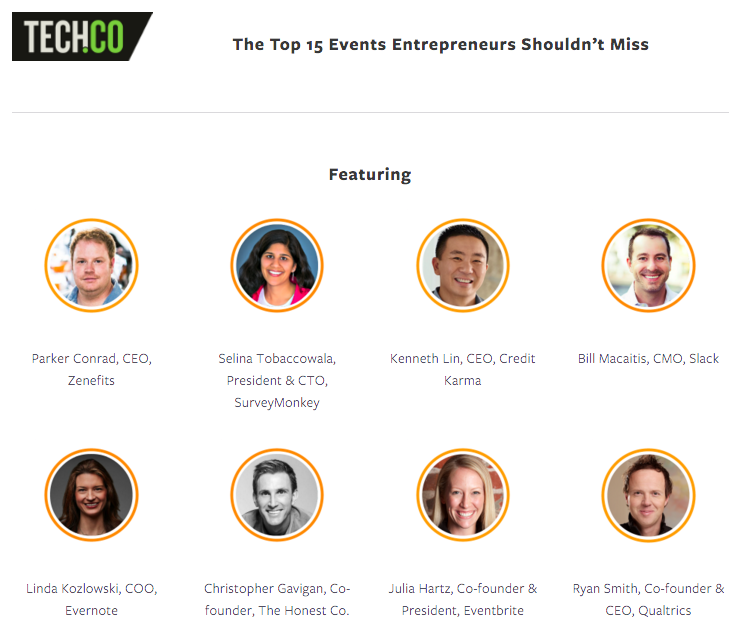
And here’s what our registration page looked like.
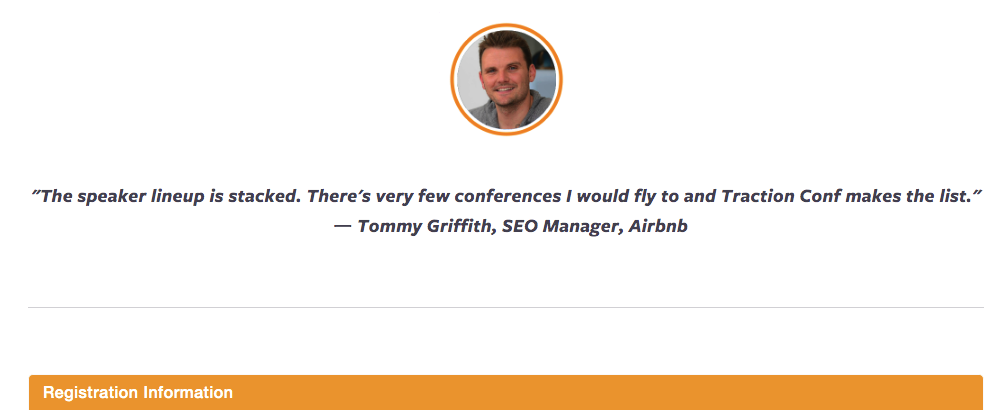
This image and quote right above the ticket purchase widget alone increased sales 2.5X.
Always be on the lookout out for ways to enhance your social proof. If someone says great things, ask if you could use it as a testimonial. If you get press coverage, add their logo as social proof to relevant pages. Your homepage and purchase page are the best places to plaster with social proof.
2. Create urgency and FOMO
While our regular tickets were $499, we launched with a limited-quantity Super Early Bird pricing at $299. Our assumption was that if we sold out Super Early Bird pricing within a day, the rest would follow. So we promoted it it aggressively across all channels and accomplished our first goal.
Selling out Super Early Bird tickets not only magnified the urgency and FOMO, but it also helped create the impression that Traction is a must attend event. This led to selling out Early Bird tickets at $399 within a week.
There on, every email update we sent included the number of tickets remaining in the subject line and in the email copy along with a new update.

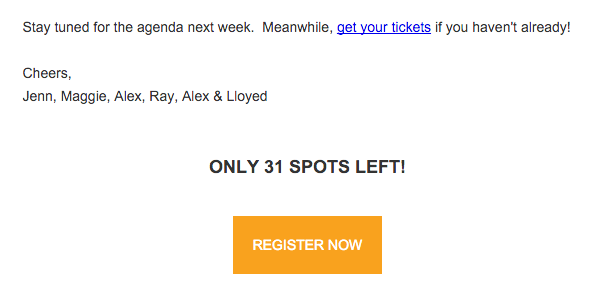
Stating the specific number of tickets left and the specific price increase worked better for us than saying 90% sold out or prices go up tomorrow. And putting that in the email subject line doubled our open rates. The higher the open rates, the higher the ticket sales we saw from the email. And we replicated the same message across other channels as well.
Key learning: Let people visualize what they’re missing out on.
3. Leverage and grow your email list.
I can’t say this enoug21`431`42qh, but dedicated emails were the biggest driver of revenue… they generated over 75% of the sales.
The good thing is Launch Academy had an established brand in the Vancouver tech community and had a sizeable list. Plus I had sizeable list from running other events and meetups.
We also added email collection widgets on our website header and via popups. While people may not be ready to open their wallets right away, they will likely join your email list to stay on top of important updates.
4. Leverage your speakers
Combined, our speakers had a social following of over 10 million. So getting them to promote us was huge.
We made it super simple for them to share by sending them a ClickToTweet link. People are busy so you don’t want to create more work for them.
Here’s a sample email we sent to speakers asking for shares:
Hey Rebecca, we’re super stoked to have you join us at Traction Conf and can’t thank you enough!
Here's a $100 OFF discount code that you can share with your network using this pre-made ClickToTweet (you can modify): Excited to talk #growth at #TractionConf SF on Oct 8. Get $100 OFF here
Hoping you can push it out today as we’ve just announced the conference.
Cheers,
Lloyed

5. Leverage your community
Create a list of all the local accelerators, incubators, coworking spaces, community organizations, meetup groups and influencers. Essentially, a list of everyone who has influence over your target audience. Give them a unique promo code and request them to send a dedicated email blast in exchange for being listed as a partner on your website and a free or discounted pass.
Make it super simple for them to promote your event. We created a partner promo package with canned content for email and social promotion with dates and times.
Here’s our template for you to make your own.
Not only did this drive buzz and ticket sales, but it also added to our social proof. Here’s a snapshot of the logos from our partners page:
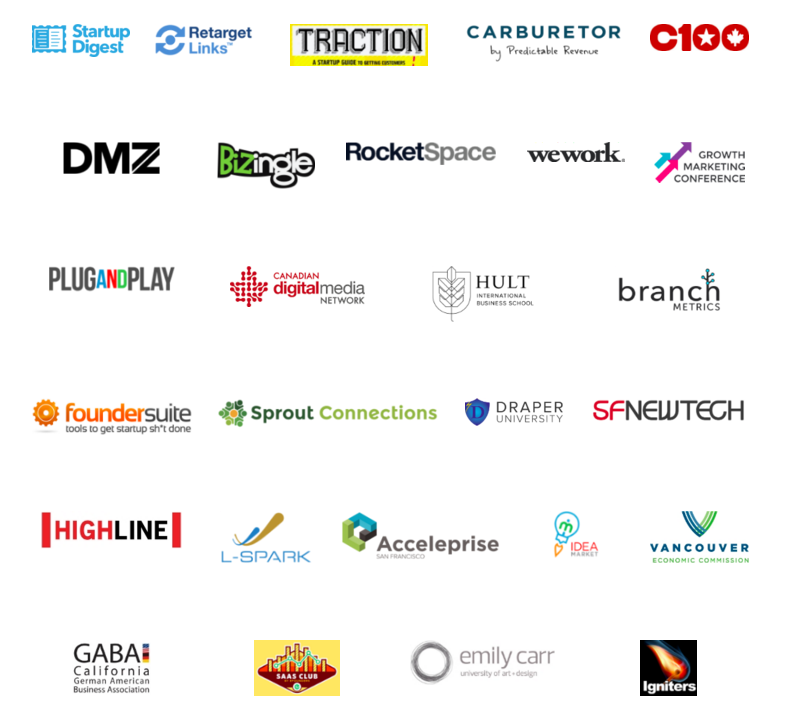
6. Retargeting
While we didn’t have a blog of our own, we shared a ton of content across email, twitter, LinkedIn, and Facebook, related to our theme written by our speakers and other big influencers. But how do you capitalize on other people’s content?
We shortened the URLs of these blog posts using RetargetLinks which enables you to show banner ads to all those that click on any links you share. They do this by inserting your retargeting campaign into any short link you share.
It’s simple to use via their website or chrome plugin:


Here’s some content we shared:
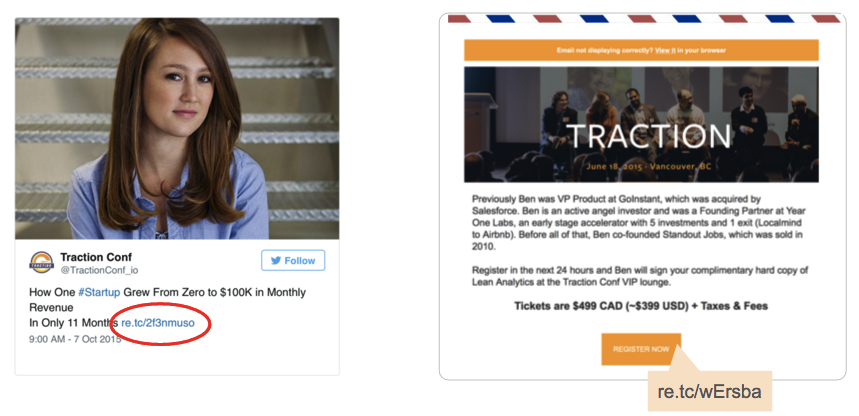
Here are the ads that people saw:
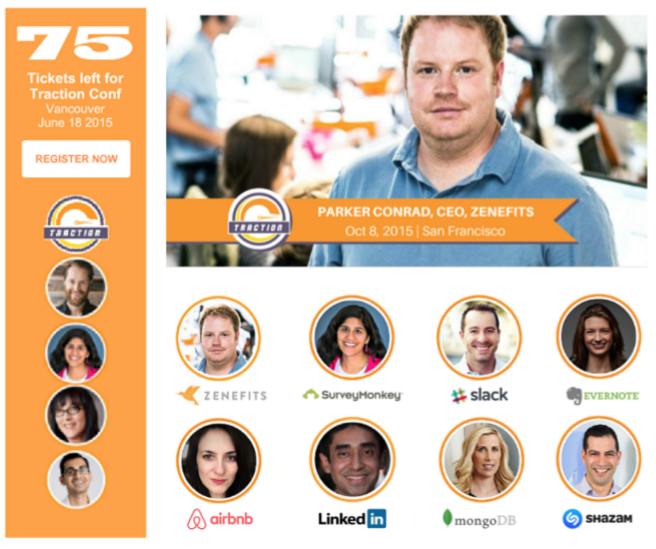
And here were the results:
Overall RetargetLinks generated 120k impressions and about 10-12% of our ticket sales. We spent less than $1,800 so the ROI was around 25X.

Another form of retargeting we did was email retargeting. We used Bizzabo for ticketing and they helped us determine which visitors abandoned the ticket sales cart after starting the signup process.
Emailing those visitors with a reminder saying we have less than X tickets left or prices are going up by X generated a 60%+ conversion. However, the number of people who abandoned cart were less than 20, so it wasn’t a huge jump.
7. Press
Getting press for your events can be tricky; however, our advantage was it was an event for a local non-profit plus the angle was relevant for local tech press. Simple email pitches to influencers and reporters got us some early coverage.
Plus our community partners who wrote for sites like HuffPo, LinkedIn Pulse etc. started writing about us. From there we had a snowball effect and Tech Cocktail featured us in their top events to attend this summer.
The key takeaway here was that every piece of coverage you get adds to your social proof that you can point to when reaching out for more coverage.
8. Podcasts
We partnered with General Assembly and Daily Hunt to run a series of 10 podcasts and webcasts leading up to the event. Again, this gave us to opportunity to get more buzz for our brand and increase our email subscribers.
Both General Assembly and Daily Hunt have sizable subscriber lists, so cross promoting with them made sense. Our value prop to them was we’d bring you awesome speakers and content to help you engage your audience.
9. Event listing sites
These are low hanging fruit and there are a number of sites such as Lanyrd, Crunchbase Events, Tech Cocktail, Zvents as well as local tech community sites that can generate decent traffic.
10. Group discounts
We built a list of marketing leaders from enterprises and started reaching out to them to send their team members to attend.
Our value proposition was that it’s a one-day MBA on modern tech marketing and their employees will have the opportunity to learn tactical tips from and network with some of the biggest names in growth. Plus we offered them group discounts at 5 tickets, 10 tickets and 20 tickets.
However, the speakers, the social proof and buzz generated made – essentially everything up to bullet 8 – made this a lot easier. Once you have all that in place, it would be a shame if you don’t capitalize on some good ‘old fashioned direct outreach.
11. Social Ads
While ads didn’t really work for us, it was worthwhile testing. We wanted to get to a ratio of $50:$500 i.e. for every $50 we spent we’d sell a $500 ticket. After trying many different ad variations on Facebook and twitter, this ad got us to $50:$500 mark.
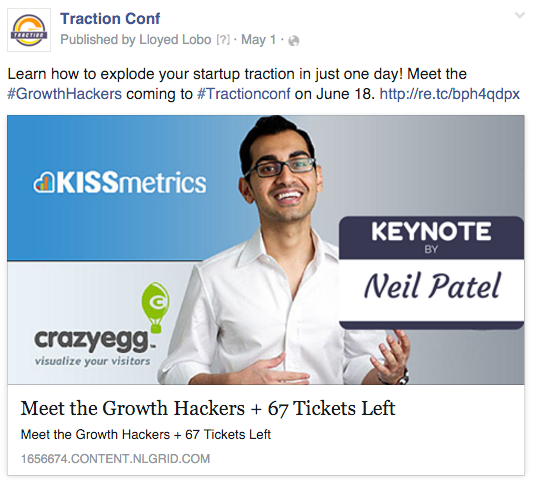
The key differentiator was having a popular social influencer in the ad creative. So we started experimenting with similar ads. However, we finally decided to stop paid and triple down on all other channels as the ROI was better.
Our biggest learning from running Traction Conf in June in Vancouver and then following it up with an even bigger Traction Conf in October, both from idea to execution in a span of 8 months combined, was that nothing beats validating your idea by charging for it.
The other learning was that it’s important to be razor focused on finding a few channels that provide the best results – for us it was direct email, partnerships and retargeting.
And last but most important, product and traction go hand in hand. Just because you get people to pay doesn’t mean you compromise and provide a subpar experience.










Add A Comment
VIEW THE COMMENTS